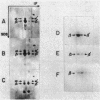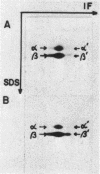Abstract
The glutamine synthetase of Neurospora crassa, either purified or in cell extracts, was inactivated by ascorbate plus FeCl3 and by H2O2 plus FeSO4. The inactivation reaction was oxygen dependent, inhibited by MnCl2 and EDTA, and stimulated in cell extracts by sodium azide. This inactivation could also be brought about by adding NADPH to the cell extract. The alpha and beta polypeptides of the active glutamine synthetase were modified by these inactivating reactions, giving rise to two novel acidic polypeptides. These modifications were observed with the purified enzyme, with cell extracts, and under in vivo conditions in which glutamine synthetase is degraded. The modified glutamine synthetase was more susceptible to endogenous phenylmethylsulfonyl fluoride-insensitive proteolytic activity, which was inhibited by MnCl2 and stimulated by EDTA. The possible physiological relevance of enzyme oxidation is discussed.
Full text
PDF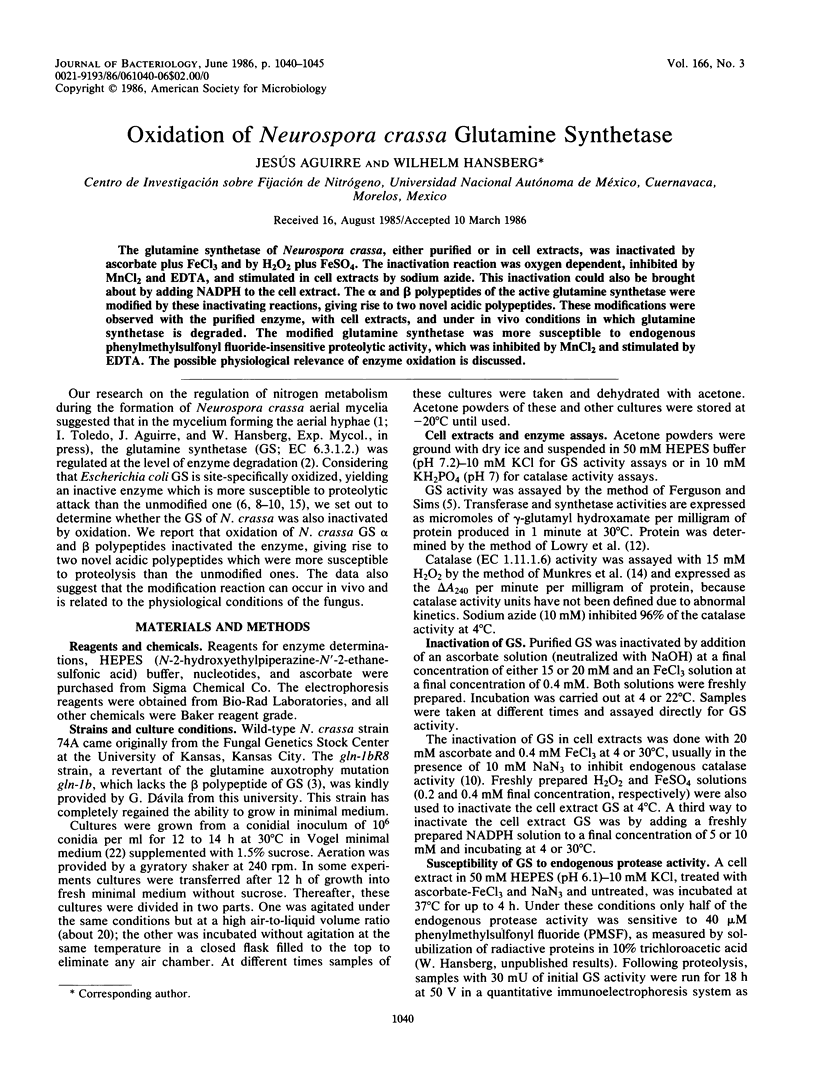
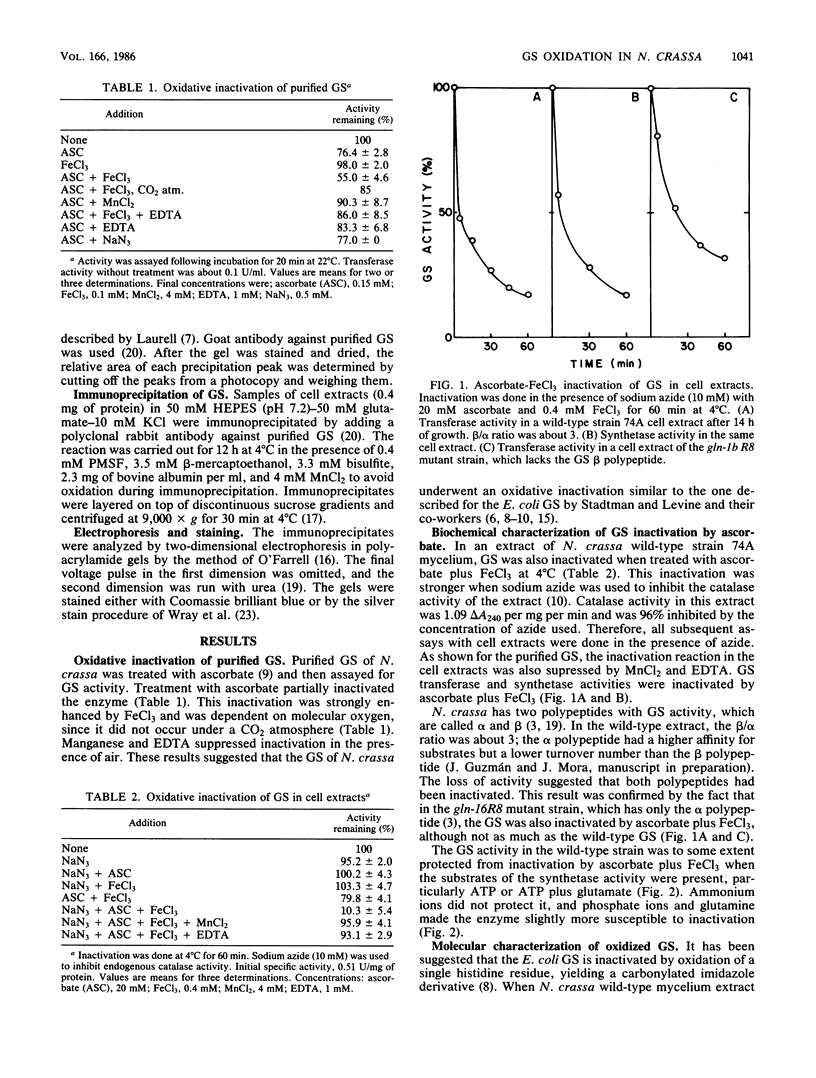
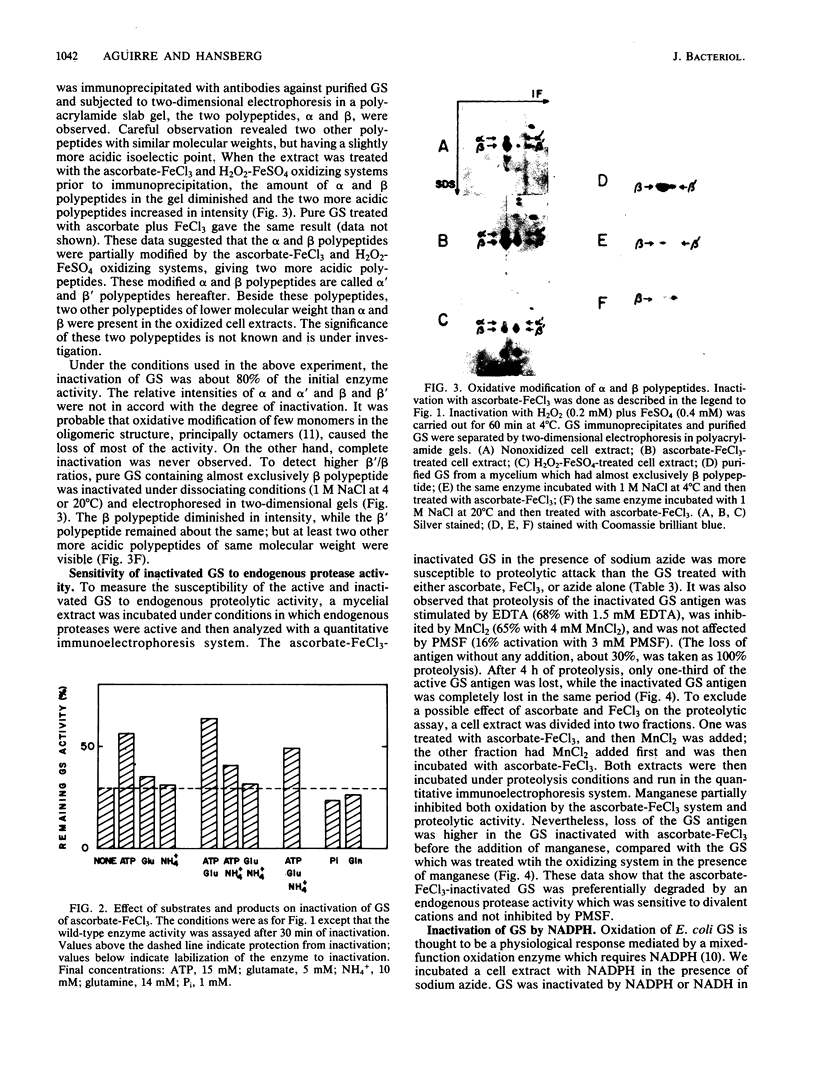
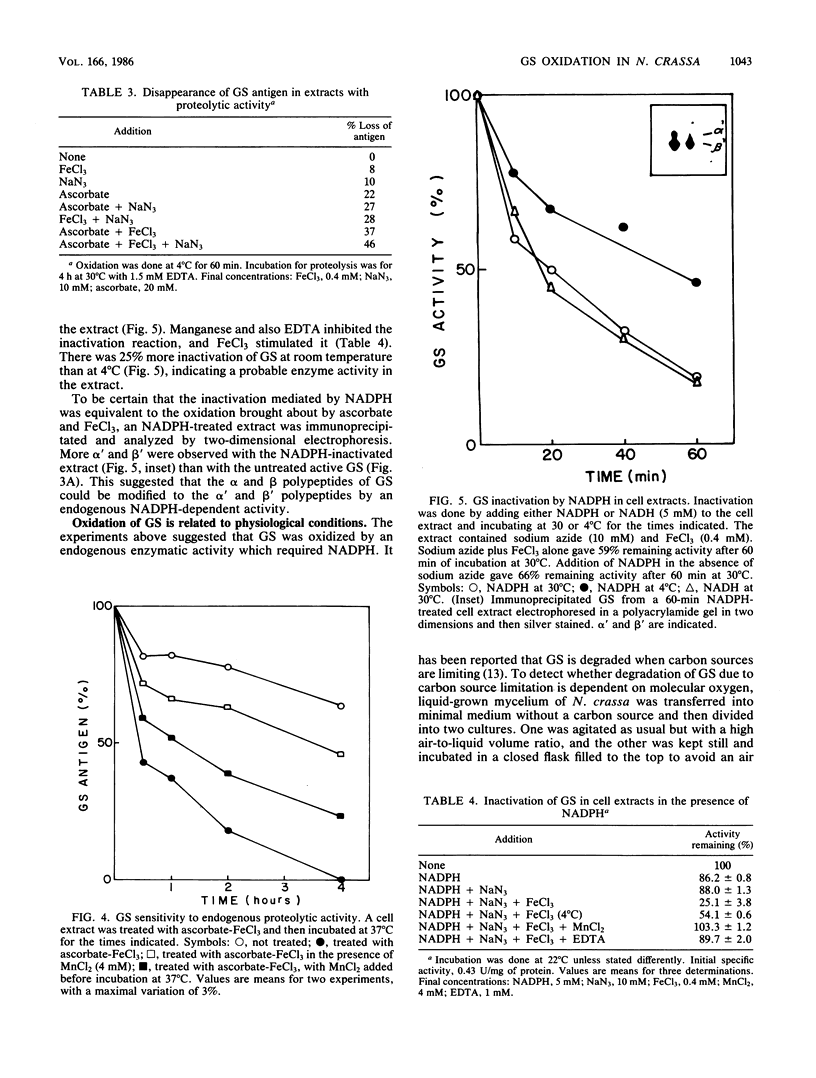
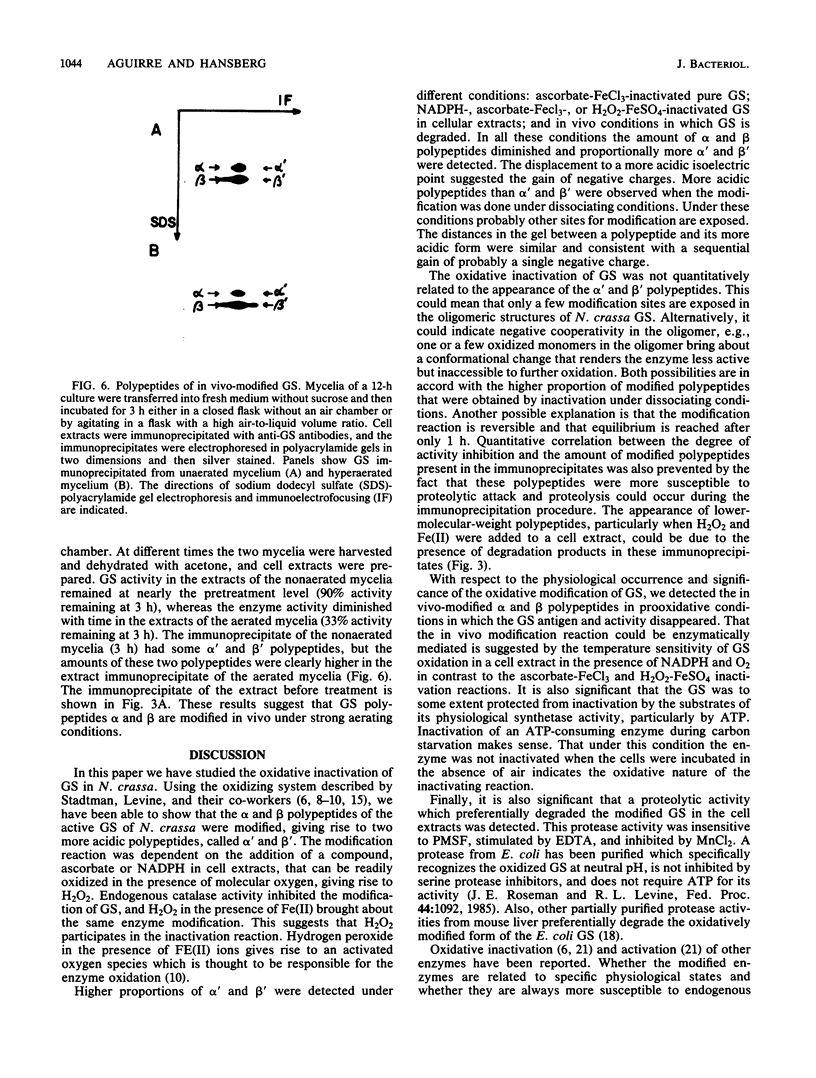
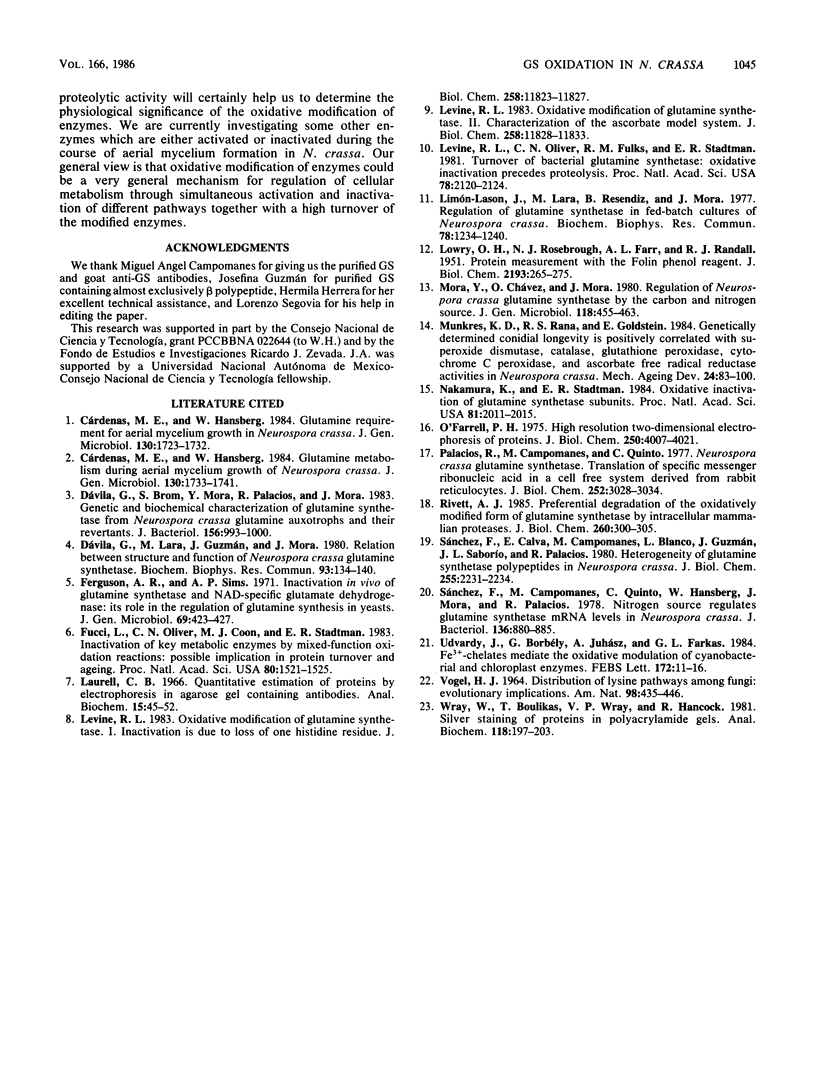
Images in this article
Selected References
These references are in PubMed. This may not be the complete list of references from this article.
- Dávila G., Brom S., Mora Y., Palacios R., Mora J. Genetic and biochemical characterization of glutamine synthetase from Neurospora crassa glutamine auxotrophs and their revertants. J Bacteriol. 1983 Dec;156(3):993–1000. doi: 10.1128/jb.156.3.993-1000.1983. [DOI] [PMC free article] [PubMed] [Google Scholar]
- Dávila G., Lara M., Guzmán J., Mora J. Relation between structure and function of Neurospora crassa glutamine synthetase. Biochem Biophys Res Commun. 1980 Jan 15;92(1):134–140. doi: 10.1016/0006-291x(80)91530-2. [DOI] [PubMed] [Google Scholar]
- Ferguson A. R., Sims A. P. Inactivation in vivo of glutamine synthetase and NAD-specific glutamate dehydrogenase: its role in the regulation of glutamine synthesis in yeasts. J Gen Microbiol. 1971 Dec;69(3):423–427. doi: 10.1099/00221287-69-3-423. [DOI] [PubMed] [Google Scholar]
- Fucci L., Oliver C. N., Coon M. J., Stadtman E. R. Inactivation of key metabolic enzymes by mixed-function oxidation reactions: possible implication in protein turnover and ageing. Proc Natl Acad Sci U S A. 1983 Mar;80(6):1521–1525. doi: 10.1073/pnas.80.6.1521. [DOI] [PMC free article] [PubMed] [Google Scholar]
- LOWRY O. H., ROSEBROUGH N. J., FARR A. L., RANDALL R. J. Protein measurement with the Folin phenol reagent. J Biol Chem. 1951 Nov;193(1):265–275. [PubMed] [Google Scholar]
- Laurell C. B. Quantitative estimation of proteins by electrophoresis in agarose gel containing antibodies. Anal Biochem. 1966 Apr;15(1):45–52. doi: 10.1016/0003-2697(66)90246-6. [DOI] [PubMed] [Google Scholar]
- Levine R. L., Oliver C. N., Fulks R. M., Stadtman E. R. Turnover of bacterial glutamine synthetase: oxidative inactivation precedes proteolysis. Proc Natl Acad Sci U S A. 1981 Apr;78(4):2120–2124. doi: 10.1073/pnas.78.4.2120. [DOI] [PMC free article] [PubMed] [Google Scholar]
- Levine R. L. Oxidative modification of glutamine synthetase. I. Inactivation is due to loss of one histidine residue. J Biol Chem. 1983 Oct 10;258(19):11823–11827. [PubMed] [Google Scholar]
- Levine R. L. Oxidative modification of glutamine synthetase. II. Characterization of the ascorbate model system. J Biol Chem. 1983 Oct 10;258(19):11828–11833. [PubMed] [Google Scholar]
- Limón-Lason J., Lara M., Resendiz B., Mora J. Regulation of glutamine synthetase in fed-batch cultures of Neurospora crassa. Biochem Biophys Res Commun. 1977 Oct 24;78(4):1234–1240. doi: 10.1016/0006-291x(77)91425-5. [DOI] [PubMed] [Google Scholar]
- Munkres K. D., Rana R. S., Goldstein E. Genetically determined conidial longevity is positively correlated with superoxide dismutase, catalase, glutathione peroxidase, cytochrome c peroxidase, and ascorbate free radical reductase activities in Neurospora crassa. Mech Ageing Dev. 1984 Jan;24(1):83–100. doi: 10.1016/0047-6374(84)90177-5. [DOI] [PubMed] [Google Scholar]
- Nakamura K., Stadtman E. R. Oxidative inactivation of glutamine synthetase subunits. Proc Natl Acad Sci U S A. 1984 Apr;81(7):2011–2015. doi: 10.1073/pnas.81.7.2011. [DOI] [PMC free article] [PubMed] [Google Scholar]
- O'Farrell P. H. High resolution two-dimensional electrophoresis of proteins. J Biol Chem. 1975 May 25;250(10):4007–4021. [PMC free article] [PubMed] [Google Scholar]
- Palacios R., Campomanes M., Quinto C. Neurospora crassa glutamine synthetase. Translation of specific messenger ribonucleic acid in a cell-free system derived from rabbit reticulocytes. J Biol Chem. 1977 May 10;252(9):3028–3034. [PubMed] [Google Scholar]
- Rivett A. J. Preferential degradation of the oxidatively modified form of glutamine synthetase by intracellular mammalian proteases. J Biol Chem. 1985 Jan 10;260(1):300–305. [PubMed] [Google Scholar]
- Sánchez F., Calva E., Campomanes M., Blanco L., Guzmán J., Saborío J. L., Palacios R. Heterogeneity of glutamine synthetase polypeptides in Neurospora crassa. J Biol Chem. 1980 Mar 25;255(6):2231–2234. [PubMed] [Google Scholar]
- Sánchez F., Campomanes M., Quinto C., Hansberg W., Mora J., Palacios R. Nitrogen source regulates glutamine synthetase mRNA levels in Neurospora crassa. J Bacteriol. 1978 Dec;136(3):880–885. doi: 10.1128/jb.136.3.880-885.1978. [DOI] [PMC free article] [PubMed] [Google Scholar]
- Wray W., Boulikas T., Wray V. P., Hancock R. Silver staining of proteins in polyacrylamide gels. Anal Biochem. 1981 Nov 15;118(1):197–203. doi: 10.1016/0003-2697(81)90179-2. [DOI] [PubMed] [Google Scholar]



